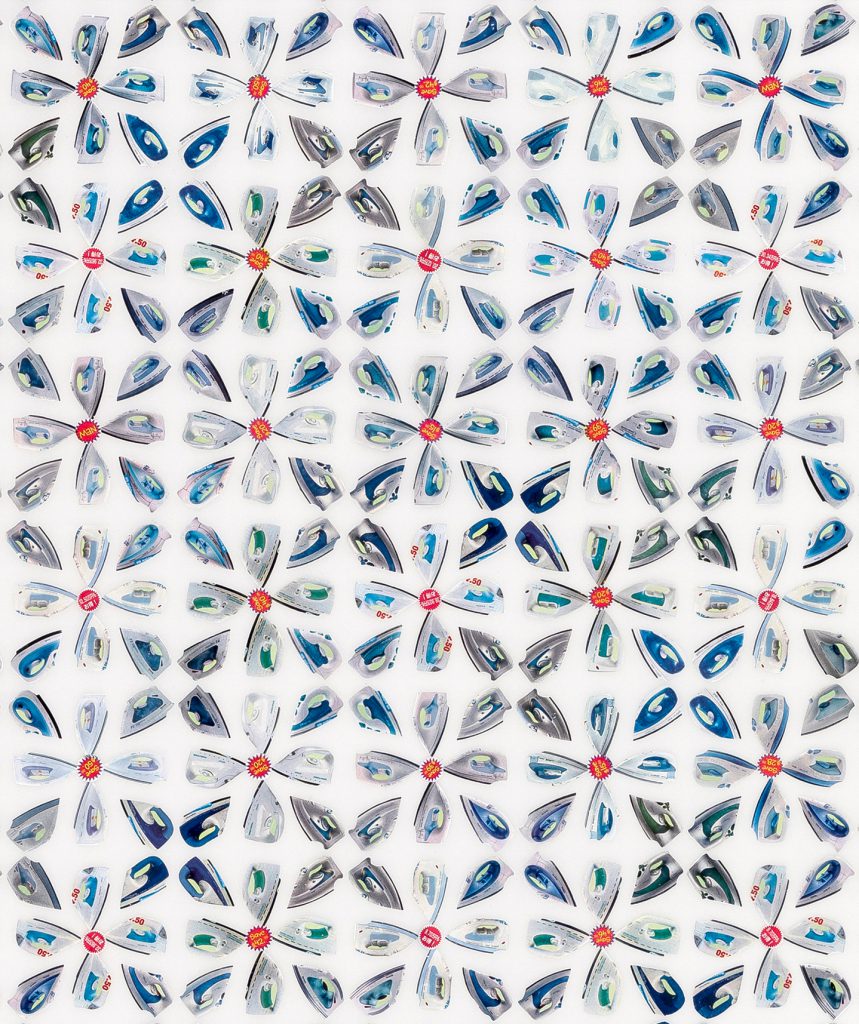Elizabeth Gower creates stunning abstract compositions from humble, everyday materials, emphasizing translucency, fragility, and impermanence. Her practice draws from commercial imagery and domestic objects—newspapers, tissue paper, and advertising materials—transforming these seemingly banal elements into intricate visual arrangements. While her work has often been framed within a feminist sensibility, it is equally driven by strong aesthetic concerns, as noted by Sutton Gallery.
Gower’s artistic approach aligns closely with the critical framework of Realism / Nouveau Réalisme, a movement characterised by the desire to bring art closer to life through material means. This philosophy connects her work to artists like Hannah Höch, Richard Hamilton, Robert Rauschenberg, and Mark Bradford, all of whom employ collage, assemblage, photomontage, and silk-screen juxtapositions to incorporate found imagery and explore social commentary.
In Gower’s compositions, rigid and orderly patterns replace representational imagery, yet they highlight commercial symbols—price tags, advertising typography, and glossy surfaces—arranged in deliberate, repetitive sequences. This structured fragmentation not only reflects aesthetic concerns but also subtly critiques consumerism and capitalism, exposing the overwhelming presence of commercial information in daily life.
By repurposing these ephemeral materials, Gower transforms the disposable into something visually enduring, challenging perceptions of value and meaning in contemporary culture.

Urban Artefacts #3(detail), 2004
Paper collage on drafting film
200 x 100 cm

Installation, 1976
Acrylic and resin on newsprint, wax paper, tissue paper and nylon
300 x 400 x 300cm
Monash University Museum of Art
I’m drawn to this installation for its fragile materiality and creative openness—a vessel for possibilities. The translucent paper, layered patterns, and vertical hanging format create an immersive experience, inviting movement and interaction.
This idea of presentation triggered a lot into my direction of pushing the digital collages works — the ‘Printmagram’, I began this experimentation to look into motion and abstraction in 2020, when I programmed digital images into the print machine, and painted on the surface with gestural motion, calling the result “printmagrams”.

Printmagram | Pigmented ink on sketchbook, 2020
